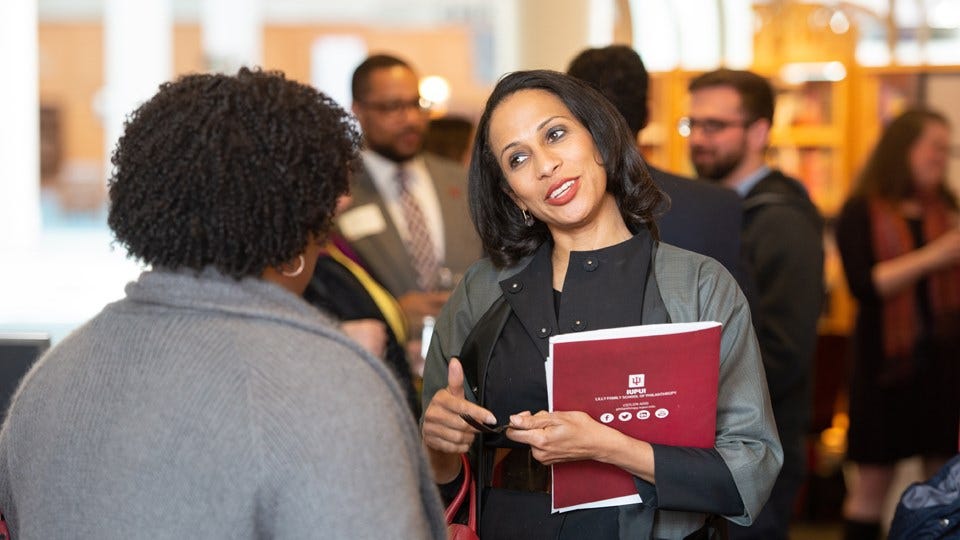IUPUI Study: New Low in Charitable Giving
 Una Osili is Chair in Philanthropy at the Lilly Family School of Philanthropy at IUPUI
Una Osili is Chair in Philanthropy at the Lilly Family School of Philanthropy at IUPUI
Subscriber Benefit
As a subscriber you can listen to articles at work, in the car, or while you work out. Subscribe NowA new report from the Lilly Family School of Philanthropy at IUPUI shows a significant drop in the number of U.S. households that donate to charity. The study shows the share of Americans making a charitable contribution dropped from two-thirds in 2000 to half in 2018, which was the latest year in which data was available. The school says the research shows evidence of a substantial decline in formal charitable giving rates even before the pandemic caused economic upheaval.
In an interview with Inside INdiana Business, Lilly School of Philanthropy Dean Una Osili said this is the first time in two decades American’s generosity dropped below 50%.
“For the first part of the 21st century, giving stayed relatively stable with two thirds of Americans giving in any given year,” said Osili. “But beginning around the time of the Great Recession (2008-2009), we started to see that fraction decline.”
Data is not yet available to show whether the decline in participation continued in 2020 when unemployment rates soared as businesses locked down. But Osili says only part of the decline in giving was due to changes in income and wealth.
“The reasons for this are complex. Part of it is economic factors. Also, the lower rates of religious participation and affiliation have an impact,” explained Osili. But another factor is trust. She says the study shows a growing number of Americans are less likely to trust institutions. “Especially (among) younger Americans and that has been going on for quite some time. We especially see that declining trust affecting millennials and other younger Americans.”
Osili says the decline in the share of households giving to secular causes did not begin until after the Great Recession, and it occurred at a slower rate than the decline in the percentage of households giving to religious causes.
The rate of giving to secular causes hovered in the mid-50s (55%-57%) from 2000-2008 but slid to 42% in 2018. In terms of religious causes, the study shows the percentage of U.S. households donating to church was about 46% between 2000-2004, but the Lilly School says it dropped to 29% in 2018.
“Another group of factors has to do broadly with the fact that fewer Americans are attending services affiliating with religious traditions where we often learn about giving,” said Osili. “Whether it’s secular causes or religious congregations, we need to make sure that we continue to teach, to model and to encourage people of all different ages and backgrounds to participate in charitable giving.”
View the full report by clicking here.
In an interview with Inside INdiana Business, Lilly School of Philanthropy Dean Una Osili said this is the first time in two decades Americans have seen such a significant drop.
